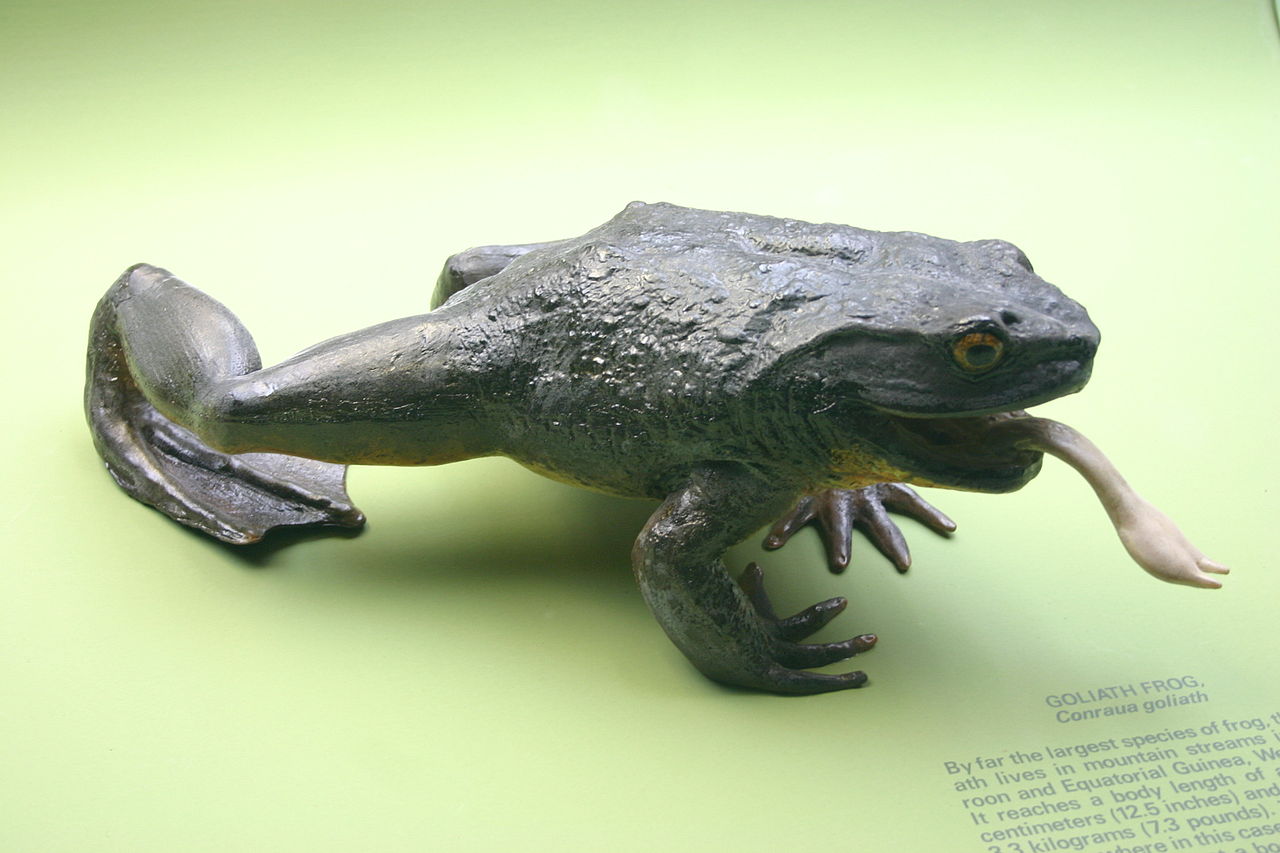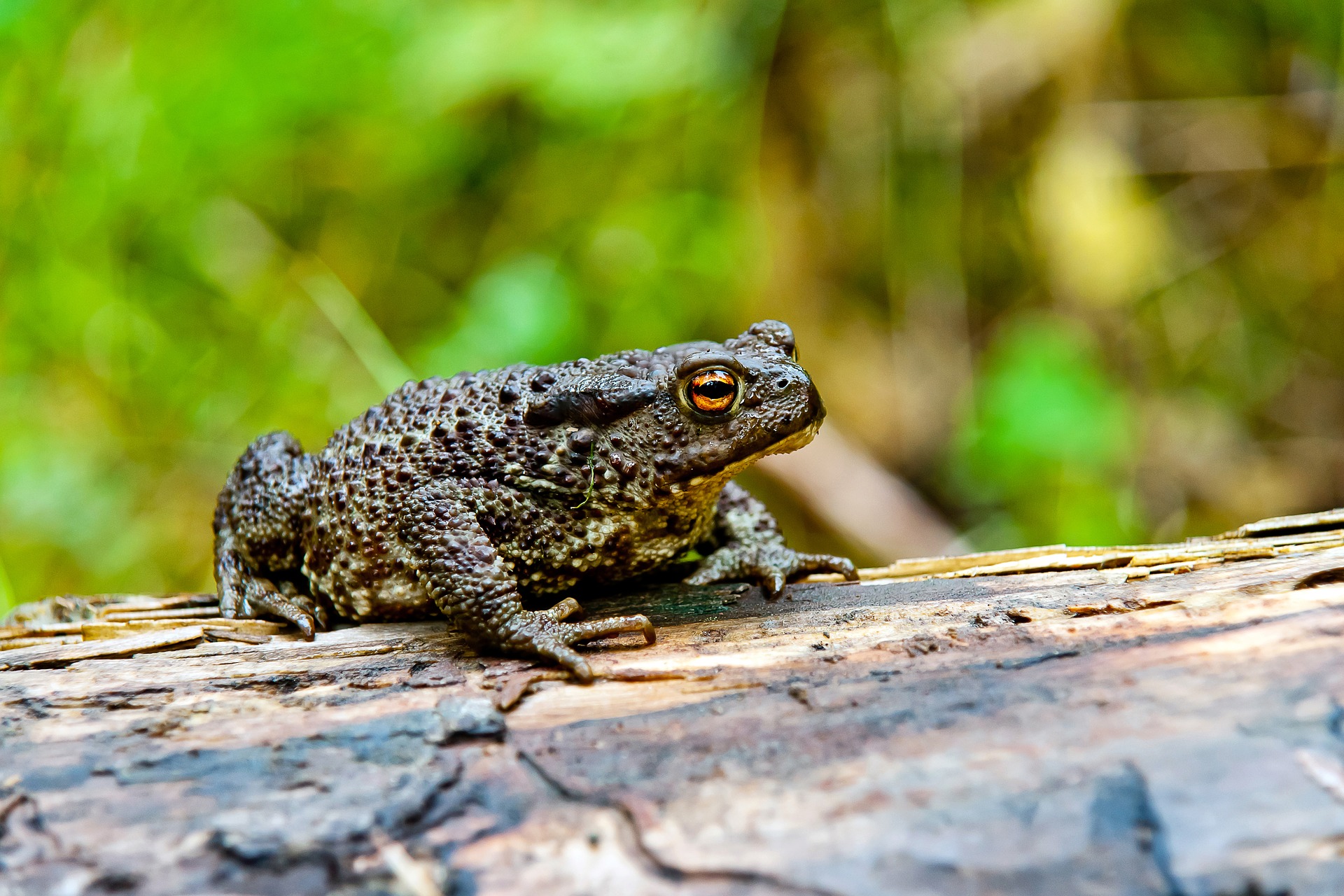The goliath frog is one of the largest amphibians in the world. In fact, it is considered the largest. However, it is unknown to many.
Therefore, today we want to talk to you about how is the goliath frog, the habitat where it resides, the feeding and reproduction of the anuran as well as its behavior.
How is the goliath frog
The goliath frog, also known as conraua goliath, is considered the largest living frog in the world today, and can weigh between 650 grams and 3 kilos; and measure between 17 and 32 centimeters. It is known about her since 1906, when George Albert Boulenger described it in one of your documents. As for the name, it owes it to the Bible itself since it refers to the fearsome 2,90 meter giant called Goliath who died at the hands of David.
The goliath frog's body is quite wide and has a triangular head. In it, the eyes are just as big as those of the human being, and somewhat bulging. The eardrum measures half a centimeter and is located about five from the eyes. Also, a fold of their skin runs from their eyes to the back of their eardrum.
But the most striking thing about the goliath frog are its legs. The hind ones are much longer than the front ones, and thicker and stronger because with them he can jump a distance of 3 meters (normal frogs do not jump more than a meter). It has interdigital membranes that go to the tips of the fingers, and the second finger is always the longest of all.
The frog's skin is angular in texture. The shades range from brown to green while the ventral part is more yellow, cream or orange.
Despite its large size, the sound it makes when it croaks can be frightening, but the truth is that the goliath frog is mute. It does not have the usual mouth sacs of frogs, but it is capable of making whistles out of its mouth. It also does not have bridal pads.
As for the young, they are the same size as the larvae and tadpoles of other frogs, so they do not differ more than when they begin to develop.
The life expectancy of the goliath frog is about 15 years.; In captivity, as long as its habitat is respected and it is well cared for, it can reach 25.
The behavior of the Conraua goliath
The goliath frog is an amphibian that, like many other animals, has nocturnal habits. During the day, it is usually resting between the stones or hiding from other predators that may attack it. However, at night is when they go in search of food. It usually does so by the areas of rivers and waterfalls and uses the ability to jump and travel great distances, as well as its excellent eyesight, to spot its prey and attack them by surprise.
If the specimen is still young, it is normal for it to spend most of its time in the water, and its prey are those that come to drink or are in the water.
Regarding territoriality, they are quite aggressive with others and live in solitude. In addition, it is very difficult to have as a pet because it does not adapt to captivity, going through phases of stress, environmental changes that affect its health, etc.
Habitat
The goliath frog is found in the African containment. Within this, the location is to the west, especially the areas of Equatorial Guinea and Cameroon. It is very rare to find it in other continents unless it is in captivity and even in it, it is difficult for the specimens to live properly and not get sick from this change of habitat.
This type of frogs likes to live in areas of rivers with fresh water, but they don't have to be calm waters, they like rapids and waterfalls. In fact, areas with sandy bottoms, but clear waters, are their favourites. As an adult, they don't usually spend a lot of time in the water, which, when young, they will. Its natural habitat allows it to go out to sunbathe through the rocks, and to maintain humidity in the environment where it lives.
In fact, no goliath frog specimens are found at more than 1000 meters of altitude.
Due to the loss of its natural environment, this frog is one of those that is in danger of extinction. Taking into account that there are few specimens and that it only lives in one part of the planet, it is important to prevent it from disappearing.
Goliath frog feeding

The diet of the goliath frog is different depending on whether the specimen is young (larva and tadpole) or already an adult. In the case of the former, that is, being a larva or a tadpole, their diet consists mainly of aquatic plants. In fact, it is a herbivorous animal in that period of time.
However, the adult goliath frog completely changes its diet and it becomes carnivorous. Their food is insects, small frogs, spiders, bats, crabs, small mammals or turtles, small snakes...
The goliath frog's way of hunting is curious. Due to its large size, it is capable of great leaps. In addition, it has excellent eyesight, which allows it to spot its prey in the distance and quickly approach it to capture it with its tongue and, thanks to its jaws and small jaws, it can eat it in one bite.
Reproduction of the goliath frog
As with other amphibians, the goliath frog requires an aquatic environment to reproduce. The male frogs enter the water and begin calling the females. This is very characteristic because it does not have vocal sacs and what is heard are hisses that will attract females to where you are. In that time, the male will have built a kind of area to lay the eggs, usually on the banks of the river and near the vegetation so that they are more protected.
If the male is accepted, the female will enter the water and mating by amplexus will occur. The laying can be more than 200 3,5 mm eggs that will adhere to other eggs and vegetation in the spawning area. As soon as the larvae hatch, a process of about 3 months begins to fully develop.
After laying the eggs, both the male and the female ignore the young, which means that many of them may not be born or may be prey to other animals, both while in the eggs and in the larval stage.


